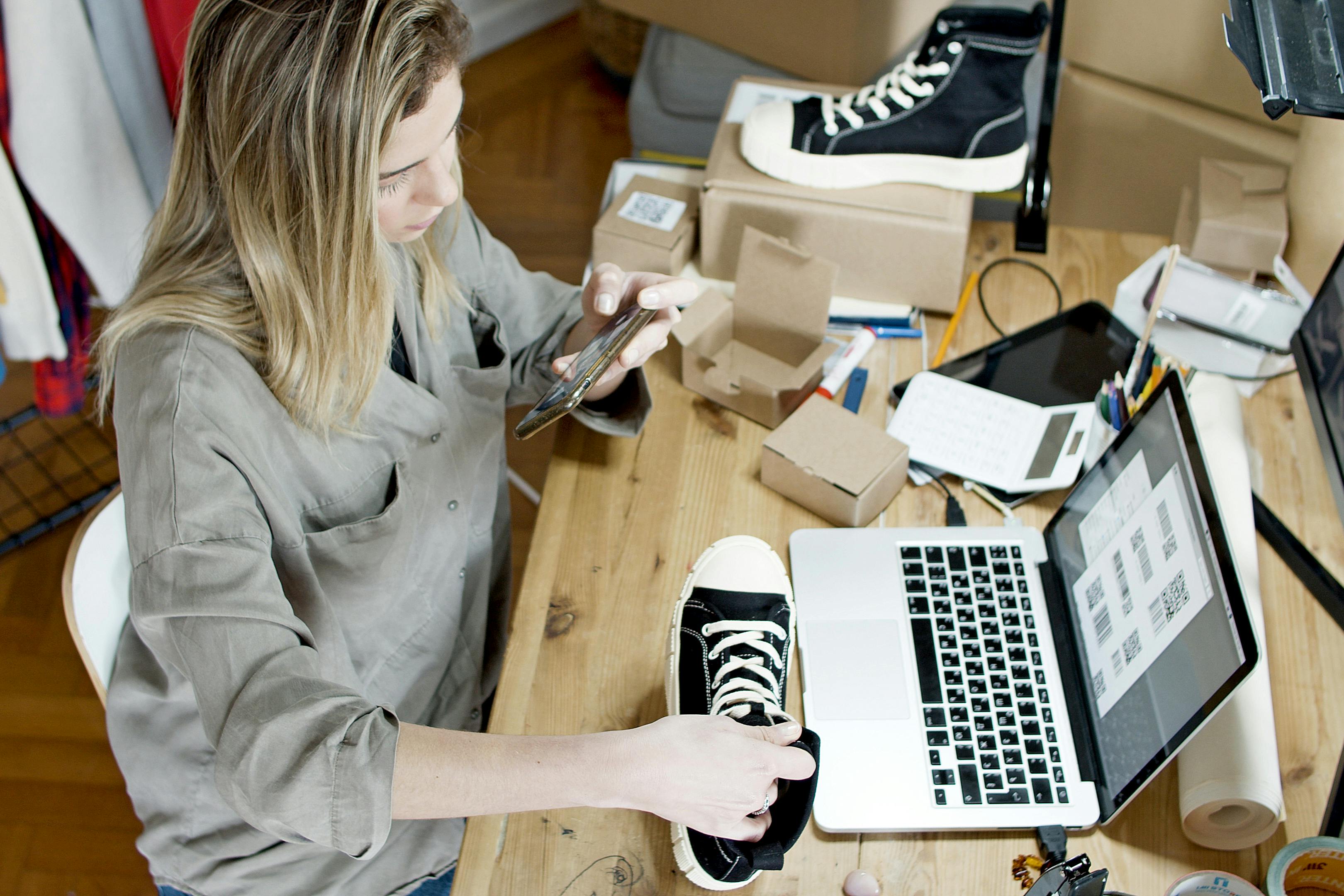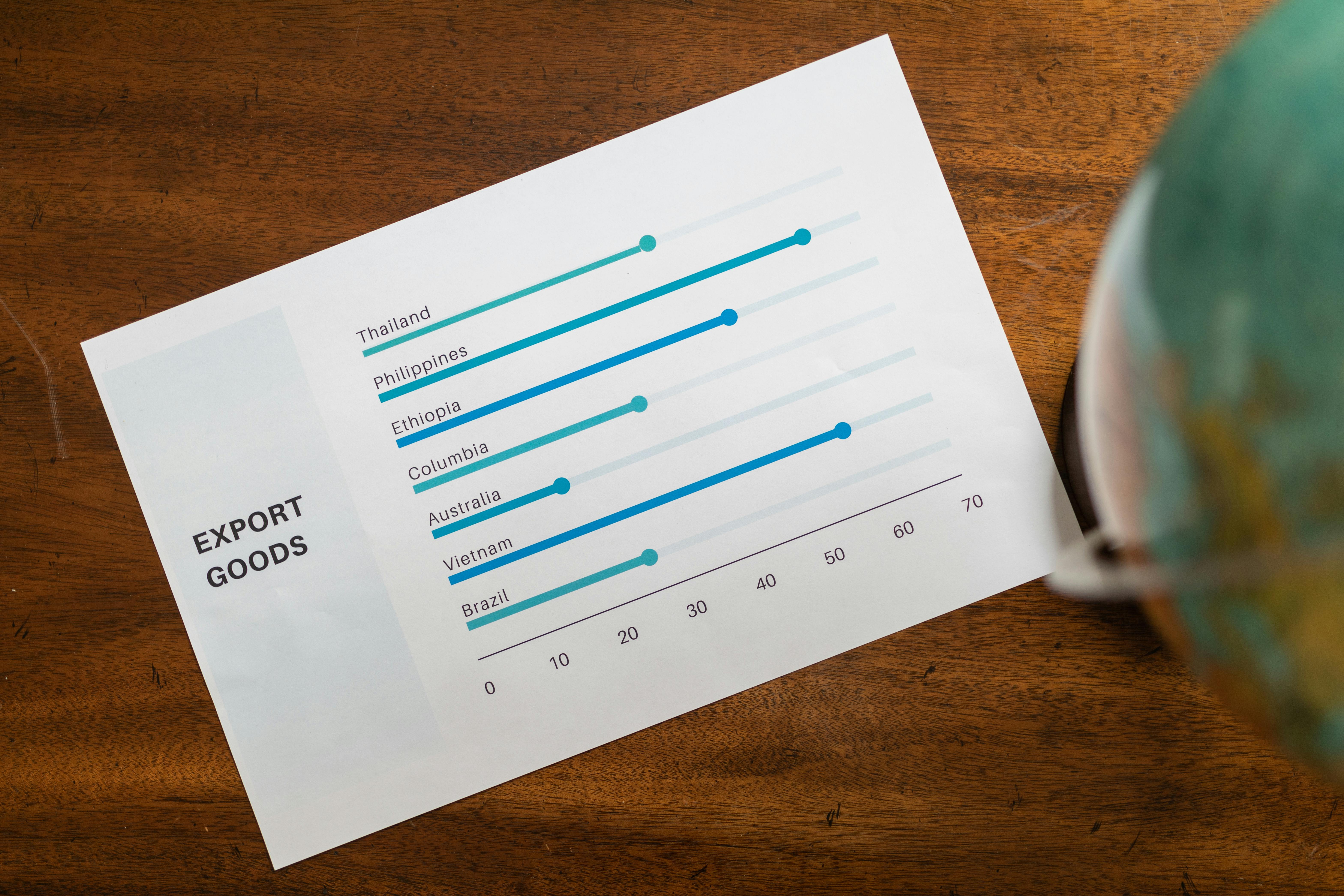Okay, so picture this: you're scrolling through Facebook Marketplace, right? You see a million listings for old T-shirts and used jeans, all priced like they're just... old T-shirts and used jeans. But then, every now and then, you spot something different. Something that makes you stop. It’s a pair of shoes, or maybe a handbag, and it’s being sold secondhand, but the price tag is way higher than you'd expect. And the weirdest part? You *get* it. You actually think, "Yeah, that's fair."
What’s the magic trick? How do some folks sell used stuff for what feels like new prices, while others are practically giving things away? It’s not just about what you’re selling, but *how* you’re selling it. It’s all about the "pre-loved premium," and it’s something I’ve seen firsthand, both as a buyer and, honestly, as someone who’s tried to clear out my own closet.
I remember this one time, I had this old concert T-shirt from a band that broke up years ago. It was faded, had a tiny hole, and probably smelled a little like nostalgia. My first thought was to just toss it in the donation bin. But then my friend, who’s way savvier than me when it comes to selling stuff online, looked at it and said, "Dude, that's vintage." Vintage? My old, sweaty band tee? She listed it, used that word, and wouldn't you know it, someone bought it for way more than I'd ever have imagined. It hit me then: words matter. A lot.
This isn’t about tricking anyone; it's about *framing* the value. It’s about understanding that for certain items, "used" doesn't mean "worthless"; it means "has a story," "is unique," or "they don't make these anymore!" And there are seven key strategies, almost like secret keywords, that savvy sellers use to sprinkle that magic dust on their listings and justify those higher prices. Let’s dive in.
1. Keyword Optimization: The Secret Sauce of Description
Alright, let's start with the big one: words. You know how when you're looking something up online, you type in exactly what you want, and if you don't use the right words, you don't find it? Same idea here. But it's not just about finding; it's about *feeling*. Certain words just carry more weight, more prestige.
Think about it: describing an item as simply "used" is like serving a plain boiled potato. It's fine, it works, but it's not exciting. Now, imagine that same potato, but you call it a "heirloom Yukon Gold, hand-harvested, with rich, buttery notes." Suddenly, it sounds a lot more appealing, doesn't it? The same principle applies to secondhand goods.
According to curio.app, incorporating terms like "vintage," "limited edition," "designer," "authentic," "rare," "exclusive," and "collector's item" can seriously bump up the perceived value of what you're selling (curio.app). They hit on something crucial: a "vintage designer handbag described as 'authentic Gucci vintage limited edition'" is going to fetch a lot more than just "used Gucci bag." It's not just a description; it's a value statement.
I saw this play out with my cousin, who’s obsessed with sneakers. He’d buy these limited-edition drops, wear them a few times, and then, inexplicably to me, sell them for *more* than he paid. His listings weren’t just "used Nike shoes." Oh no. They were "Mint Condition, Off-White x Nike Air Jordan 1 UNC - Rare Collector's Piece - Only 500 Ever Made!" He'd be super specific, use all those fancy words, and people would *snap them up*. He knew his audience, and he spoke their language. He was basically saying, "This isn't just a shoe; it's a piece of history, an investment."
2. Building a Strong Brand: Beyond Just Selling Stuff
Okay, so you've got the keywords down. But what if you're not just selling one random thing, but you want to make a go of selling secondhand items regularly? This is where "brand" comes in, and no, you don't need a fancy logo or a marketing team. Your brand is basically your reputation. It’s what people think when they see your name pop up in a listing.
Think of those local antique shops or specialty consignment stores. Why do people go there instead of just hitting up every garage sale? Because they *trust* those places. They know the items are vetted, fairly priced, and the experience will be good. That's a brand in action.
According to resellcalendar.com, building a reputable brand involves a few key things: providing top-notch customer service, being upfront about your items, and delivering quality products (resellcalendar.com). What does that actually mean? It means if someone asks a question, you answer quickly and politely. If a button is missing on a jacket, you *say* it's missing, don't try to hide it. And when the item arrives, it should be as good, or even better, than what the buyer expected.
I learned this the hard way once. I sold a textbook online, and I just tossed it in a poly mailer. It arrived a bit banged up. The buyer was cool, but the review was lukewarm. Lesson learned. The next time, I wrapped the book in tissue paper, put it in a box, and even slipped in a little handwritten "thank you" note. The buyer’s review was glowing. They probably thought, "Wow, this person actually cares!" That tiny bit of effort built a sliver of a brand. They might not remember my name, but they'd remember the positive experience. And positive experiences lead to repeat customers and higher sales, which ultimately justifies higher prices because people are willing to pay for that peace of mind (resellcalendar.com).
3. Highlighting Item Condition and Authenticity: The Nitty-Gritty Details
This one is less about flair and more about cold, hard facts. When someone's buying something "pre-loved," they’re inherently a bit skeptical. Is it really in good shape? Is it a fake? This is where being super clear and honest pays off big time. You've got to be the ultimate show-and-tell expert.
curio.app hammers this home: "Providing detailed descriptions and high-quality photos that showcase the item's condition, along with any unique features, can attract buyers willing to pay a premium. Being transparent about the item's history and any imperfections can also build trust and justify higher pricing" (curio.app).
Think about buying a vintage leather jacket. A seller who posts a blurry, dark photo and says "good condition" isn't going to get much interest. But a seller who posts clear, well-lit photos from every angle, points out the cool natural wear on the elbows, mentions a tiny scuff on the cuff, and then adds, "Minor wear consistent with age, but all zippers functional and lining intact. This jacket has amazing character!"—that's a whole different ballgame. They're telling you exactly what you'll get, flaws and all, but framing those "flaws" as part of its charm.
And authenticity? That's HUGE. For designer items, or anything with a brand name attached, people want to know it's the real deal and not a cheap knock-off. If you have original receipts, authenticity cards, or even just detailed photos of serial numbers or unique stitching, flaunt them. My buddy, the sneakerhead, always includes pics of the box, the tags, and any authentication stickers. It’s not just about showing; it’s about *proving*. When buyers feel confident they’re getting what they pay for, they’re way more likely to open their wallets wider.
4. Leveraging Limited Availability: The "FOMO" Factor
You know how everyone wants what they can't have? That’s basically the driving force behind this strategy. If something is rare, hard to find, or no longer made, its value skyrockets. It's like finding a unicorn. No one needs a unicorn, but everyone wants one because, well, it's a *unicorn*.
extrapocketchange.com nails this point, saying that emphasizing the "rarity or limited availability of an item can justify higher prices" (extrapocketchange.com). They use the example of a limited edition sneaker release or a discontinued model. These aren't just shoes; they're *artifacts*.
I remember trying to get my hands on a specific vinyl record a few years ago. It was from a band that had a small, dedicated following, and they only pressed a limited number of copies of this particular album. I missed the original sale. For months, I scoured resale sites. The prices were insane! But people were paying them. Why? Because you *couldn't* just walk into a store and buy a new one. It was a piece of music history, a trophy for true fans. The sellers weren't just selling a record; they were selling access to something exclusive, something that sparked major "fear of missing out" (FOMO) in people like me.
If you have something that fits this description—maybe it’s a discontinued model of a piece of tech, a vintage toy that’s no longer manufactured, or a band t-shirt from a one-off concert—lean into that scarcity. Explain *why* it's rare. Tell the story of its limited run. This taps into a buyer's desire for uniqueness and exclusivity, making them much more willing to shell out a premium.
5. Offering Bundles and Discounts: The Art of More for More
At first glance, "bundles and discounts" probably sounds like something you do to *lower* prices, right? Like clearance racks. But here’s the trick: when done correctly, it actually *increases* the perceived value and encourages buyers to spend more overall, which means you're still justifying a higher price for the collective goods.
finmodelslab.com points out that "creating bundles of related items and offering them at a combined price can increase the perceived value and justify higher pricing" (finmodelslab.com). They give the example of selling a vintage jacket with matching accessories. Instead of just selling the jacket for $50, and the scarf for $15, you bundle them as a "Vintage Power Look" for $70. You've sold more, and the buyer feels like they got a complete outfit and a better deal than buying separately.
I've fallen for this myself. I was looking for a specific vintage camera lens once. Found one, but then the seller listed it with a camera body and a few filters as a "Photographer's Starter Kit." The total price was higher than I initially wanted to spend just on the lens, but the convenience and the feeling of getting a "complete set" were incredibly appealing. It felt like a smart investment in my hobby, not just a single purchase.
This isn't about giving things away; it’s about making a larger purchase seem more enticing. Think about clothing: a complete outfit, not just a shirt. For collectibles: a series of items, not just one piece. For books: a trilogy, not a single novel. It makes the transaction larger and more satisfying for the buyer, even if the per-item cost might be slightly higher than if they cherry-picked.
6. Utilizing Data-Driven Insights: Being a Smart Seller
This sounds super technical, like you need to be a data scientist, but it’s really just about being a smart observer. It’s about knowing what’s hot and what’s not, and pricing accordingly. You wouldn't try to sell a flip phone for the price of the latest iPhone, right? Well, maybe you would if it was the *first* flip phone ever made and signed by Steve Jobs, but you get my point.
finmodelslab.com emphasizes that "analyzing market trends and customer preferences can help you identify which items are in demand and justify higher prices" (finmodelslab.com). This means doing your homework.
Before I even *think* about selling something now, I do a quick search on whatever platform I'm using. What are similar items selling for? Not just what people are *asking*, but what are people actually *paying*? What features seem to make items sell faster or for more money? Are people looking for specific brands, colors, or sizes right now?
I once had a bunch of old video games. My first thought was to just list them all for a flat rate. But I took the time to look up individual game prices. Turns out, a couple of those cartridges were surprisingly rare and were going for crazy money! Meanwhile, others were practically worthless. If I hadn't done that quick bit of "data analysis" (aka, common sense research), I would have either undervalued the rare ones or overpriced the common ones. By understanding my target market and what they’re actually buying, I could price the rare gems at a premium, knowing there was demand, and still move the common ones at a fair price. It’s about being strategic, not just guessing.
7. Providing Exceptional Customer Service: The Golden Rule of Reselling
Last but not least, and arguably the most important, is good old-fashioned customer service. You can have the rarest, most beautiful item in the world, listed with all the right keywords and stunning photos, but if you're a jerk to deal with, no one's paying a premium. In fact, they might not even bother buying from you at all.
resellcalendar.com puts it simply: "Offering excellent customer service, including prompt responses to inquiries, accurate descriptions, and reliable shipping, can justify higher prices" (resellcalendar.com). Think about why people go to fancy boutiques versus a discount store. It's often the experience. Even if the prices are higher, the service makes you feel valued.
I had an experience selling a vintage camera lens recently. A buyer asked a ton of questions – more than usual. I could have gotten annoyed or given one-word answers. Instead, I took extra photos, answered every question thoroughly, and even offered to send a video of the lens working. When they decided to buy, I shipped it immediately, packaged it super securely, and sent them tracking updates. They left an amazing review, talking about how great the communication was and how well-packaged the item was. They paid my asking price without haggling, even though similar lenses were listed for a bit less. Why? Because they felt secure in their purchase, and they trusted me.
That trust, that positive shopping experience, is priceless. It leads to repeat business, word-of-mouth recommendations, and those glowing reviews that signal to future buyers, "This isn't just a seller; this is someone who cares." And when buyers feel like they're dealing with a professional, trustworthy, and genuinely helpful person, they’re absolutely going to be more willing to pay that "pre-loved premium." It’s an investment in your reputation, and that investment pays dividends.
The Takeaway
So, there you have it. The pre-loved premium isn't some mythical creature. It’s real, and it’s achieved by combining smart strategies with good old-fashioned effort. It’s about taking something that might have been overlooked and presenting it in a way that highlights its true value—its history, its uniqueness, its quality.
Whether you're clearing out your closet, starting a side hustle, or just trying to understand why some secondhand scores are coveted treasures while others are yard sale fodder, remember these seven keywords. They’re not just words; they’re keys to unlocking perceived value and justifying prices that might surprise you, and your buyers, in the best possible way. Because in the world of "used," sometimes, a little extra love (and some clever wording) goes a very long way.



